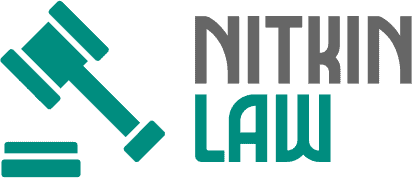
The weight of overwhelming debt can feel like a constant burden, impacting mental well-being and financial freedom. When minimum payments barely cover accruing interest and collection calls become a regular occurrence, exploring solutions becomes paramount. Debt relief emerges as a potential path, but it’s not a one-size-fits-all remedy. It encompasses several strategies designed to reduce or reorganize the amount one owes to creditors.
While the prospect of shedding significant debt is alluring, these programs carry substantial consequences and aren’t suitable for every financial situation. A thorough and honest assessment of your circumstances is the critical first step before committing to any debt relief strategy.
Read on to learn what to consider when dealing with debt relief.
Understanding the Landscape of Debt Relief
Debt relief isn’t a single action but a category of financial solutions. Some key options include:
- Debt Settlement: This involves negotiating with creditors to pay a lump sum that’s less than the full balance owed, thereby “settling” the debt. This is typically undertaken by a for-profit company that holds payments in an account until a settlement is reached, a process that can take years.
- Debt Management Plans (DMPs): Administered by non-profit credit counseling agencies, a DMP consolidates unsecured debts into a single monthly payment. The agency may negotiate lower interest rates or waived fees, but the full principal balance is repaid.
- Bankruptcy: A legal proceeding overseen by a federal court that can discharge debts entirely (Chapter 7) or create a court-ordered repayment plan (Chapter 13). This is the most severe form of debt relief, with long-lasting implications for one’s credit profile.
Before enrolling in any program, particularly if you’re negotiating with creditors, it’s highly advisable to seek professional legal counsel. For instance, a consultation with a qualified Debt Relief Attorney can provide clarity on the legal ramifications of each option and help you understand your rights.
Scrutinizing Your Financial Health: A Pre-Relief Assessment
The decision to pursue debt relief shouldn’t be made in desperation. A clear-eyed view of the entire financial picture is required. Here’s how you can assess your financial health:
Calculate the Debt-to-Income Ratio (DTI)
This key metric compares monthly debt payments to gross monthly income. A DTI above 36% is often considered a warning sign, and a ratio exceeding 43% typically indicates significant financial strain. If the DTI is high primarily due to high-interest credit card debt, a structured relief option may be warranted. However, if the ratio is manageable, more conventional methods like effective budgeting may suffice.
Differentiate Between Short-Term Hardship and Chronic Insolvency
A temporary job loss or a large, unexpected medical bill can create a short-term financial hardship. In such cases, contacting creditors directly to request a temporary hardship plan may be a more prudent first step than committing to a multi-year settlement program. Chronic insolvency, where expenses consistently exceed income over a prolonged period, suggests a deeper structural issue that may necessitate a more formal intervention like a DMP or bankruptcy.
Take a Complete Inventory of Assets and Liabilities
List all assets, including home equity, vehicles, savings, and retirement accounts. Then, list all liabilities (debts). Some debt relief options, particularly bankruptcy proceedings, involve means-testing and may put certain assets at risk. Understanding what’s owned versus what’s owed is fundamental to choosing a path that provides genuine relief without unnecessarily jeopardizing hard-earned assets.
The Inevitable Trade-Offs: Consequences of Debt Relief

Every debt relief strategy comes with a cost, and these consequences must be weighed against the benefit of reduced debt. These include:
The Impact on Credit Scores
This is one of the most significant factors to consider. Debt settlement and bankruptcy are profoundly negative events in a credit history. Accounts enrolled in settlement will be reported as delinquent until they’re settled. Even after settlement, a settled account remains a negative mark. Bankruptcy can remain on your credit report for up to ten years. Even a Debt Management Plan, while less damaging, will often result in the closure of your credit accounts and can be viewed cautiously by future lenders.
Fees and Costs
Debt settlement companies charge substantial fees, typically a percentage of the enrolled debt or the amount saved. Credit counseling agencies charge more modest monthly fees for managing a DMP. Bankruptcy involves court filing fees and attorney costs. These expenses must be factored into the overall financial calculation to determine if the net savings justify the process.
Exploring Alternatives to Formal Debt Relief
Before proceeding with debt relief, several self-directed strategies should be exhausted. These include:
The Avalanche and Snowball Methods
These are disciplined debt repayment strategies. The avalanche method prioritizes paying off debts with the highest interest rates first, while the snowball method targets the smallest balances first for psychological benefits.
Direct Creditor Negotiation
Many creditors have hardship programs that can temporarily reduce interest rates or minimum payments. It’s often more effective to contact them directly before an account goes to collections.
Debt Consolidation Loan
For those with good credit, a personal loan with a lower interest rate can be used to pay off multiple high-interest credit cards, simplifying payments into one installment loan and potentially saving on interest.
Key Takeaways
Determining if debt relief is the right course is a deeply personal decision that depends on the severity of the debt, your ability to manage it through other means, and your willingness to accept the associated consequences. By keeping the information mentioned above in mind, you can ensure an informed, strategic decision is made for your financial future.

